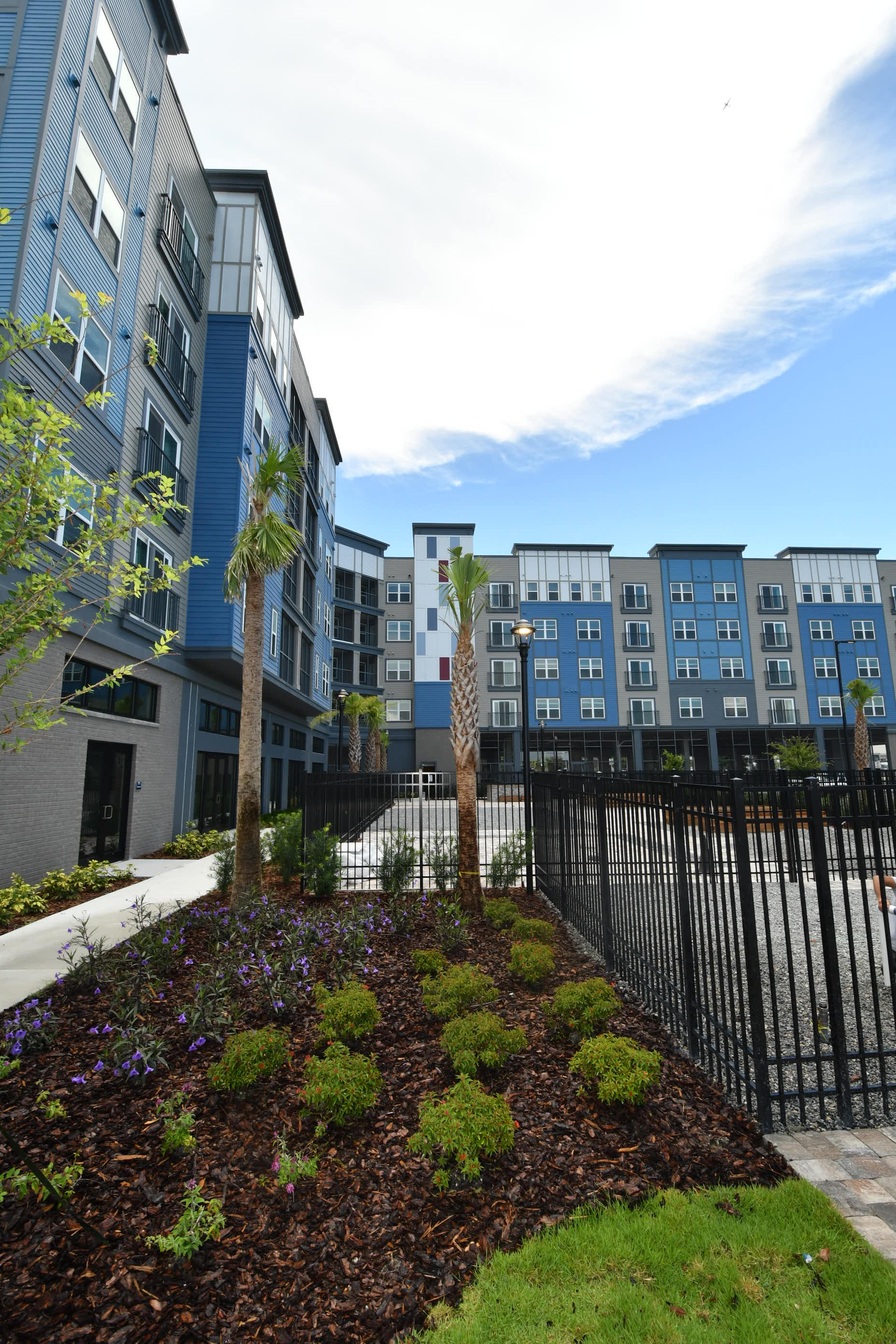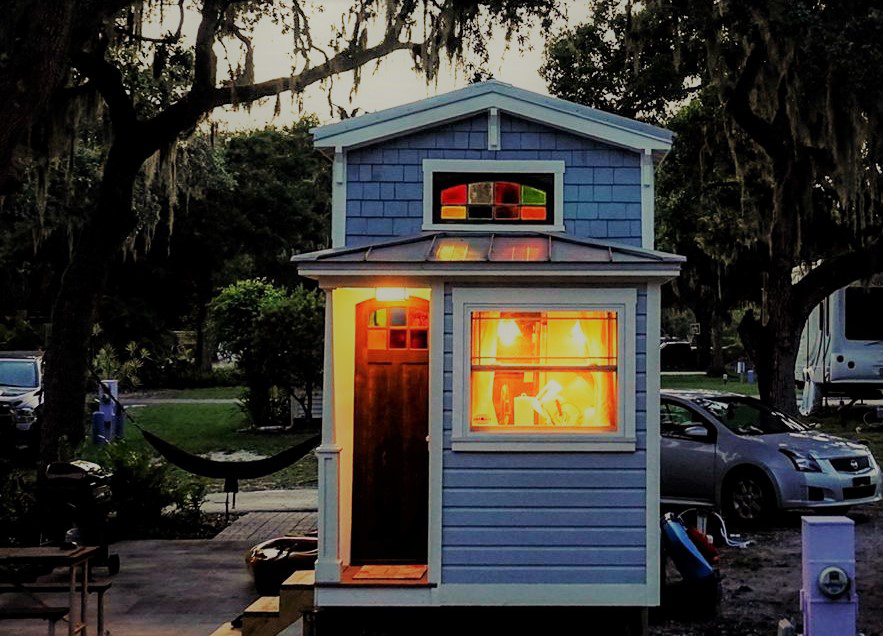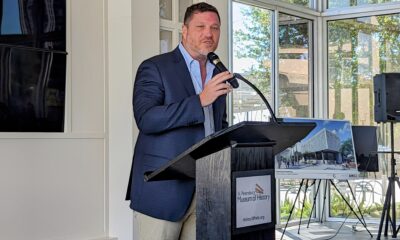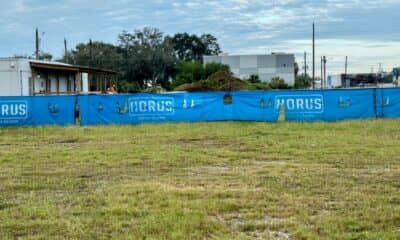Thrive
St. Pete 2.0: Solutions to the affordable housing crisis

The St. Petersburg renaissance has been in full swing for more than a decade. We’ve excelled in many areas and struggled in others. In our series St. Pete 2.0, we’re partnering with the St. Petersburg Downtown Partnership to explore what lies on the other side of our potential – what will it take to move to the “next level” as a city? Through this series, we’ll dig into specific topics with the hope that you, our thoughtful citizens, will share your insight, experience and wisdom.
In July, we delivered the results of our first survey with the St. Petersburg Downtown Partnership on bus rapid transit. In August, we brought you the results of our development in St. Pete survey. One of the main takeaways from that survey was the concern over affordable housing. Now, our third installment of St. Pete 2.0 is squarely focused on that issue.
“Let’s start with a simple premise: everyone deserves a clean, comfortable and safe place to live,” said Jason Mathis, CEO of the St. Petersburg Downtown Partnership. While we found that not every respondent agrees with this premise, it was around that central idea that we built a survey, asking respondents to respond to seven different solutions to the affordable housing problem. The eighth field asked respondents to provide their own creative solution. We asked readers to comment on ideas from expediting the use of city-owned land, to requiring inclusionary zoning, to changing impact fees, raising taxes and changing design or environmental standards. Here’s what we found:

Solution 1: Expediting the use of city-owned land to build affordable housing projects
One major component of Mayor Rick Kriseman’s “For All, From All” housing plan is the use of city-owned land for affordable housing. The plan includes $10 million in existing city-owned land and future land acquisitions, for use of affordable housing. It also includes $15 million in Penny for Pinellas funds, a one-cent sales tax used to fund capital projects in Pinellas County. The City of St. Petersburg has committed to use the $15 million over 10 years to acquire land for affordable housing.
Respondents to the survey were generally favorable to expediting the use of this city-owned land for affordable housing. Some respondents commended the City of St. Petersburg’s Disposition of Foreclosed Properties program. But many argue that city-owned property should be rezoned to allow for higher densities, mixed developments or skinny/tiny homes. “I think City is doing a good job of making land available that was burdened by liens that exceed value by $20,000 to $50,000, making redevelopment impossible. Next step is increasing density on city lots.”
“Include mixed-income developments on City-owned land to increase the supply of multi-family units,” said one respondent. “I am concerned with the disconnect between current zoning/building requirements and affordable housing options e.g., tiny homes,” said another.
Some respondents argued that city buildings, libraries and other city-owned buildings that are no longer being used be re-purposed and converted to affordable housing options with a required number of affordable units. Others argued that the city should sell the municipally-owned parcels to private developers with conditions. “Zone property as ‘blighted’ or ‘urban development zone,'” said one reader. “Sell the land with codes ensuring all units are built for median or less affordability.”
“Require affordable housing to be built as a condition of sale and offer developer benefits,” wrote another respondent. Benefits could include ad valorem tax benefits, transferable development rights and variances for higher density. The same respondent argued that smaller parcels, not suitable for larger developments, could be placed in a Community Land Trust or a revolving fund.
Solution 2: Forcing developers to include affordable housing in all new multi-family developments
Inclusionary zoning is a popular tool used by cities throughout the nation to require housing developments to set aside a certain number of affordable units in an otherwise market-rate development. Massachusetts, New Jersey and California top the list of states with these ordinances, as well as Washington D.C. But Florida is one state that has banned cities from implementing inclusionary zoning ordinances, thanks to the passage of H.B. 7130. That bill allows inclusionary zoning ordinances only if all of the associated costs of those units are “fully offset” by incentives, bonuses or fee waivers.
Most respondents to our survey suggested that incentives were a better option than “forcing” a developer to include affordable units. “I’m not sure force is the right word here,” said one respondent. “Instead of forcing, how about providing incentives to those who make a certain percentage of housing affordable in new multi-family? If the incentives are attractive enough it could work.”
Some respondents argued that inclusionary zoning models have worked in other cities to increase housing and prevent developments from being segregated by income. One respondent pointed to Lawrence, Kansas, where 10 percent of units are set aside for renters at or below median income.
“The ultimate goal is creating economically diverse neighborhoods,” wrote one reader. “Economic diversity as it relates to all income levels living together … Codify this requirement in zoning ASAP.” That reader also argued that if St. Petersburg wants an economically diverse and integrated community, developers should not be able to pay a fee in lieu of compliance to such an ordinance.
Others argued this should be part of the “cost of doing business in St. Pete.” One reader wrote, “This is a no brainer! St. Pete is at a point where we are popular enough for developers to want to build here, we call the shots! This is no real skin off of a developer’s back!”
Solution 3: Raising fees for businesses and residential projects to help pay for affordable housing
Another part of Kriseman’s “For All, From All” plan is a linkage fee. Earlier this year, the City of St. Petersburg commissioned a Nexus study, which provides evidence of a link between new residential and commercial development and the increased need for affordable housing. That study was completed this fall, and serves as the first step in the consideration of a linkage fee, a per-square-foot impact fee on new residential and commercial development that would be allocated to an affordable housing trust fund.
The City of St. Petersburg is currently gathering feedback around the Nexus study, and will likely present a draft ordinance for the fee before City Council in late winter or early spring. Kriseman’s plan anticipates $20 million in revenues from the fee that, if implemented through an ordinance, would be paid by the developers at the time of permitting. According to the results of the Nexus study, such a fee, studied in a range between $1 and $5, could generate annual revenues of $2.1 and $10.4 million annually, or $20 million to $100 million over the next decade.
Most survey respondents favored raising fees for commercial and residential projects, particularly if the connection between new development and affordable housing need was established.
One reader connected new development with the increased social services that an influx in population would require. They wrote, “Developers invest, profit and leave the remaining infrastructure imbalance to the rest of us that are still here; the residents and citizens … Higher density may be more efficient but isn’t free! Fees should be used to expand these services as well as increase affordable housing. After all, who will work in the service sector, entertainment industry, unskilled and low skilled labor positions, even health care as well as teachers, cops, firemen if they can’t afford to live here?”
Some of those opposed to such fees wrote that they could hurt development of much-needed office space or could unfairly punish businesses and residents who may be burdened with the additional costs in higher rents. Others wrote that “increasing the cost of real estate for everyone” to make it more affordable is the wrong approach.

Solution 4: Changing design or environmental standards to make it less expensive to build affordable housing
Earlier this year, St. Petersburg City Council passed a package of amendments to make affordable housing easier to build in St. Petersburg, after affordable builders like Habitat for Humanity raised concerns over design standards like facade and fenestration requirements that added thousands of dollars to the average Habitat home.
Many readers were highly amendable to changing design standards to make affordable housing less expensive to build. Some argued that current design requirements, like those for windows, make housing prohibitively expensive. Still, most were opposed to changing environmental standards.
Many respondents used this solution as an opportunity to call for less zoning requirements, like parking or square footage minimums. “Make it cheaper for developers and owners to provide new housing,” said one reader. “Upgrade existing housing by repealing unnecessary costly regulations.”
Others called for development of innovative affordable housing solutions like skinny homes, tiny homes, container homes, or even co-op housing. “Re-institute shared housing concepts such as boarding houses with individual rooms and shared common areas,” said one reader. “I believe these were ‘zoned out’ some years ago to eliminate drug houses, etc. but have proven to be worthwhile if managed property in high density cities such as D.C. and San Francisco.”
“Allowing smaller units and less parking, while maintaining sound environmental and design standards would be a better solution,” wrote one reader.
“I have seen some very interesting container homes – modern and fun – for families. Tiny homes minimize our eco-footprint and create opportunities for vegetable gardens in the same neighborhood,” wrote another.
“I am not looking to diminish environmental protection, I am looking to bring our zoning/building codes up to speed with the City’s proposed affordable housing scenarios e.g., tiny homes,” said another. “We are being required to design and build a two-car parking pad for a tiny home, which will go to a previously homeless veteran. It is most likely not needed AND it adds needless additional impervious surface to the site.”
“We need more traditional human scale development distributed throughout the city because there’s a huge demand for those places,” said another reader. “Downtown is great, but we need more neighborhood ‘downtown lite’ commercial clusters.”

Solution 5: Educating neighbors about the benefits of diverse housing types in all neighborhoods
Last spring, the City of St. Petersburg entered into talks with Grace Connection Church in west St. Petersburg to buy its nearly five-acre property to build a multi-family affordable housing development. The church, located at 635 64th St., on the border of St. Petersburg and Gulfport, had been attempting to sell its property for two years, but the deal was eventually squashed over the outrage from the surrounding Bear Creek neighborhood. Following the deal’s failure, Mayor Kriseman issued a statement calling out “NIMBYism” or “Not In My Back Yard.”
“We need our residents to be open minded to affordable housing,” Kriseman wrote. “Because the reality is this would have provided seniors or educators, firefighters, nurses and other hardworking residents with a quality place to live. The work to accomplish this continues and we will only be able to provide housing affordability if the entire community is committed to doing so.”
Many of the respondents to our survey saw education around the benefits of diverse housing as vital to the success of affordable housing efforts, and combating a “NIMBY” attitude seen both in opposition to affordable housing and opposition to the Central Avenue Bus Rapid Transit project. One respondent suggested that St. Pete strategize a public campaign with Pinellas County, to show “what ‘affordable housing’ looks like, who lives there, and why it is important to the community and the economy.”
Some respondents pointed to the fact that diverse housing opportunities already exist in some of the city’s older and most desirable neighborhoods built prior to World War II, and that those efforts should be replicated in the suburban-style neighborhoods of the city.

Mike Meidel (standing), director, Pinellas County Economic Development, addresses the Pinellas County Economic Development Council.
Solution 6: Supporting economic development efforts so workers can make more money so a smaller percentage of an employee’s salary will go to housing
Respondents uniformly agreed that wages are a main component of the affordable housing problem. While some argued for policies like raising the minimum wage, others recognized some of the complexities and unique challenges to St. Petersburg presented by our service industry-oriented tourist economy and the high number of retirees who choose to make St. Petersburg home.
“A significant part of our housing crisis is that local housing is expensive for locals, but cheap for outsiders,” wrote another respondent. The Tampa-St Pete-Clearwater MSA has some of the lowest wages out of all the major urban areas in the country. My biggest fear is that we will experience an upcoming ‘silver apocalypse’ when baby boomers retire en masse and move from expensive northern states into cheaper southern states. Local residents with a mortgage can’t compete with retirees paying cash.”
Some of the responses included considerations of low-income elderly residents, and disabled residents. “This is a good idea, but doesn’t help older citizens living on social security income or are no longer able to work,” one reader wrote. “There has been a reduction in available options for older, non-working or disabled folks.”
Others argued for low-wage workers upon which the economy depends. “It is not about the hourly wage,” said one response. “It is about better job availability for those who don’t pursue college. It is about creating financial services for those who are just starting out or want to work to own their own place.”
“No matter what, we need low wage workers to do low paying jobs and we need a place for them to live, or a way for them to get from lower cost housing to our job centers.”
Solution 7: Increasing property taxes to raise funds for affordable housing
Most respondents did not support a property tax increase toward affordable housing. Forty-one of our 66 responses were blatantly opposed, many others left the field blank, indicating they were not interested in the solution. Most of those against a property tax increase cited already high property taxes in St. Petersburg, as well as the problems increased taxes could pose for low-income homeowners holding on to their homes.
Some of the few supporters of a tax increased argued for specific solutions like an increase coupled with a tax credit. “This is the most important tool for long-term resolution of the affordable housing problem … It appears the best approach is to raise them at the county level then credit most home owners, ultimately increasing taxes only for those with the largest homes, unused homes, landlords who price-gouge on rent, and low density homes in the highest density areas.”
Another respondent agreed, “Couple this with an increase in the homestead exemption. Pinellas County has about double the rate of ‘vacant’ properties compared to the rest of the country. This is driven by house sharing programs and vacation homes,” the writer explained. “Tax Airbnbs and vacation homes, then use the money to pay for affordable housing.”








Wendy Martin
November 22, 2019at3:49 pm
I am on section 8 and disabled and still can’t find affordable housing here in Pinellas county, because no one wants to take the voucher and the owners wants the person to have a squicky clean background as if they haven’t done anything wrong in their lives. And the mayor and city coucilmans are so busy trying to satisfy the rich and take bribes to make affordable housing impossible to happen. Tampa does not care what the rich think about affordable living they are constantly moving forward with affordable housing and that is the way that it should be in Pinellas county. All of this talking and no results is not about anything. Really about ready to pull out of Pinellas county and move over to Tampa, before I really end up homeless!!
J S
November 22, 2019at9:01 am
One of these is different than the others. You can educate NIMBYs, but many of them are never going to change and will continue to try and exclude people from living near them. The exclusion of apartment buildings began as a way to perpetuate segregation, and it is still a motive of many (but not all) people who make those arguments. Why not make a diversity of housing types legal by right in all neighborhoods? The less need for variances and hearings the fewer opportunities for NIMBYs to fight affordable housing.
Becky Knox
November 21, 2019at10:41 pm
Would be nice if Affordable Housing meant under $700/month, when Rent is HIGH i.e. $700+/month a lot of people(me included) can’t afford it and live in Motels/hotels etc. I wanna move to Clearwater or St Pete but can’t due to Rent being so High and Landlords requiring people to make 2 to 3 times the rent in order to qualify, which I don’t. I’m on disability but don’t need handicap housing, if Rent is $700 there’s none left for other bills. I.e. Electricity. Also include some bills i.e. Electric, hot water etc.